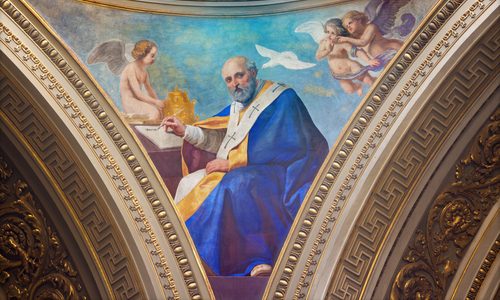The date of birth and origins of Pope St. Leo the Great are unknown. His ancestors are said to have come from Tuscany, although Leo himself may have been born in Rome. Around the year 430, during the pontificate of Pope Celestine I, Leo became a deacon in Rome.
At some point between 432 and 440, the emperor Valentinian III commissioned Leo to travel to Gaul and settle a dispute between military and civil officials. While he was away, Celestine’s successor, Pope Sixtus III, died, and Leo was chosen to be the next pope.
Leo served as pope for over 20 years. He sought to preserve the unity of the Church and its profession of faith, and to protect his people from barbarian invasions.
During Leo’s papacy, he combatted a number of heresies, including Plagiarism and Manichaeanism. In the eastern Church, many Christians were also debating the relationship between Jesus’ humanity and divinity. Leo had intervened in this debate, and as it continued, he called the Council of Chalcedon in 451. There, he spoke with authority to resolve the issue, and the Eastern bishops proclaimed that “Peter has spoken through the mouth of Leo.”
The following year, Leo led a delegation to negotiate with the barbarian king Attila, successfully preventing an invasion of Rome. In 455, Leo confronted the Vandal leader Genseric during an attack on Rome, and obtained a guarantee of safety for many of his people and the churches where they were hiding.
Pope St. Leo the Great died on Nov. 10, 461. He was proclaimed a Doctor of the Church in 1754.

